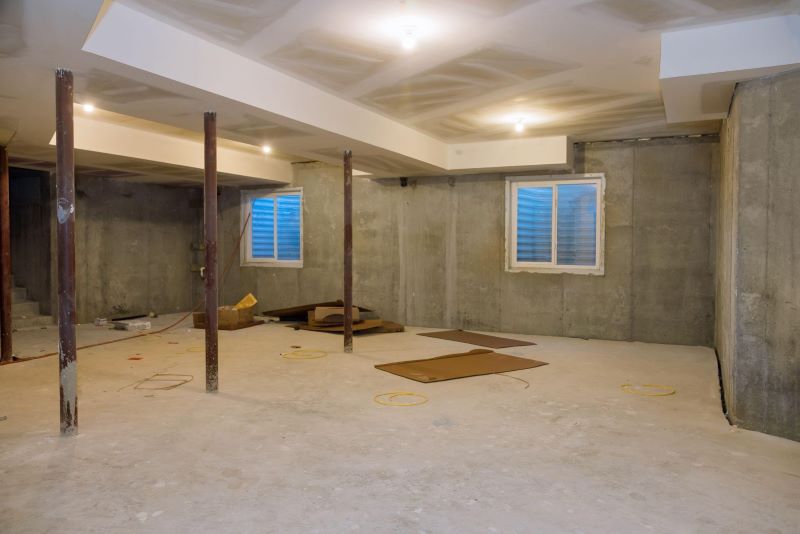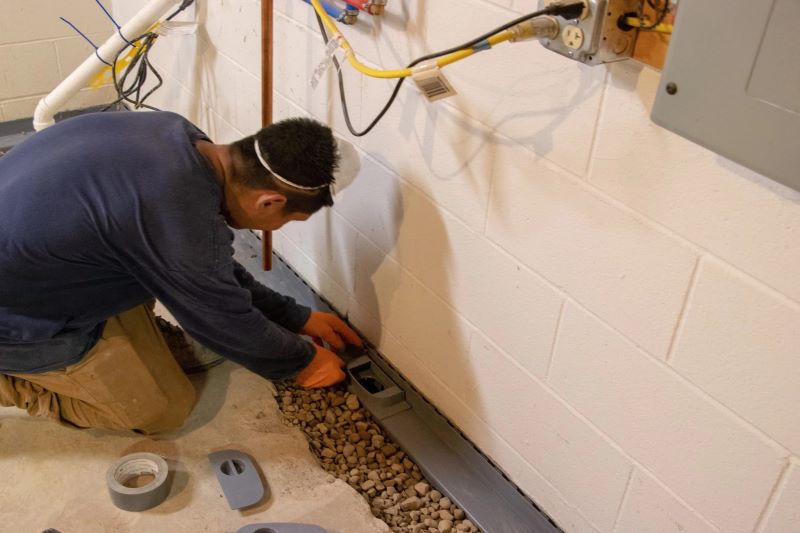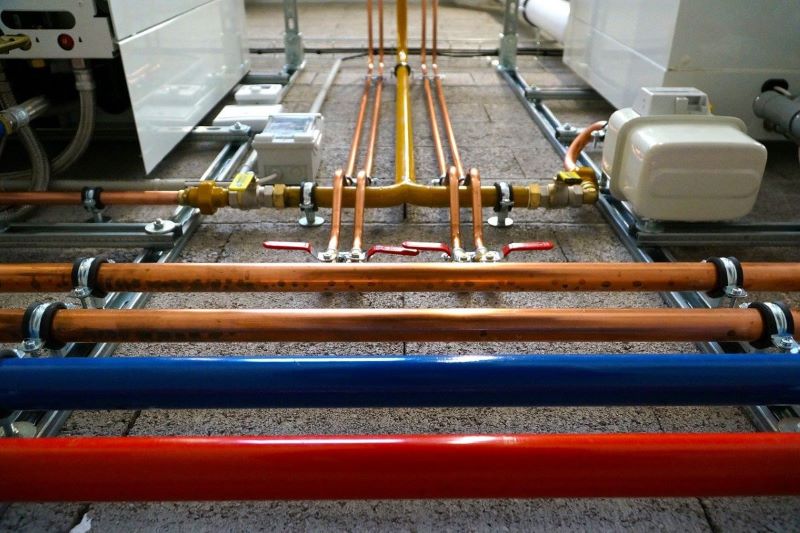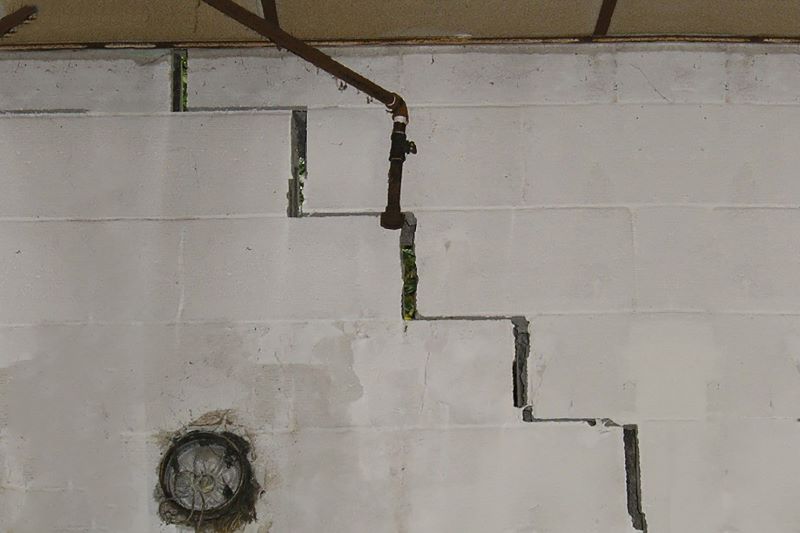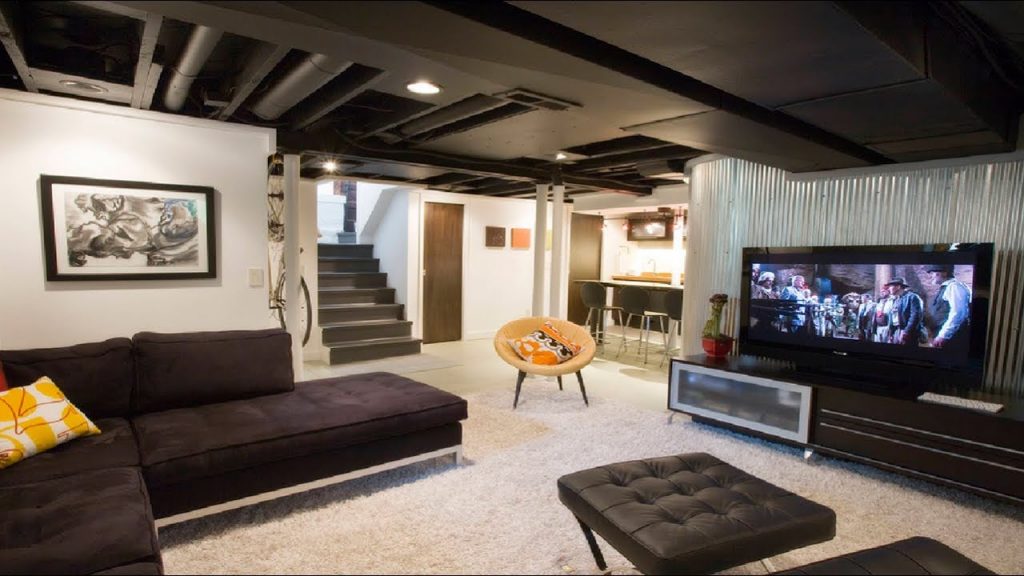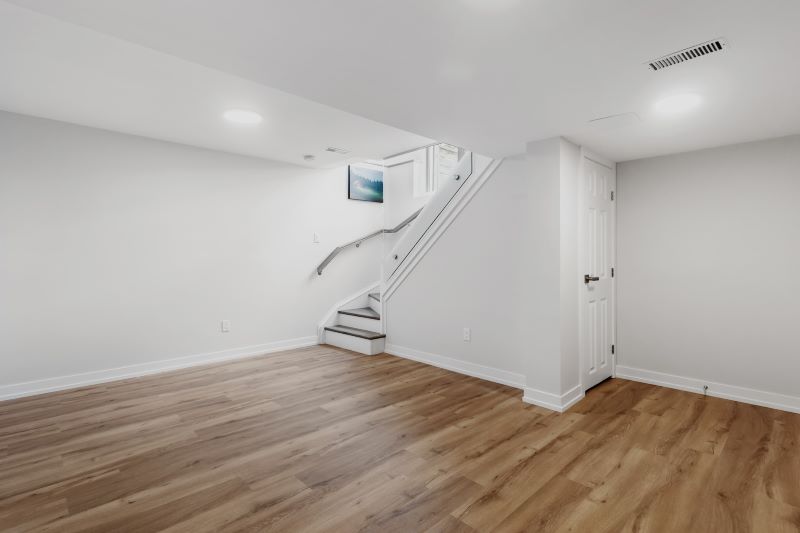Table of Contents
Basement waterproofing is paramount, particularly in regions prone to flooding, like the United States. The devastating consequences of flooding, which a poorly waterproofed basement can exacerbate, cannot be overstated. The United States has witnessed numerous instances of flooding, whether caused by heavy rainfall, hurricanes, or river overflow. In these scenarios, a well-protected basement can be a lifeline, preventing costly damage to property and valuable possessions and even ensuring the safety of residents. Various basement waterproofing methods are available to address this critical concern, each with advantages and disadvantages. Homeowners need to understand these methods to make informed decisions and safeguard their homes from the potential ravages of flooding and water damage.
Understanding the Need for Basement Waterproofing
Common Issues Associated with a Wet or Damp Basement
A wet basement can lead to many problems affecting a home’s structural integrity and its occupants’ health and comfort. Common issues include:
- Mold and Mildew Growth: Excess moisture creates an ideal environment for mold and mildew to flourish. These microorganisms can release harmful spores and mycotoxins, posing health risks to individuals with respiratory issues.
- Foundation Damage: Prolonged exposure to moisture can weaken a home’s foundation, leading to cracks, shifting, and potentially costly structural repairs.
- Damage to Belongings: Water can damage or destroy valuable items stored in the basement, such as furniture, electronics, and family heirlooms.
- Unpleasant Odors: Dampness can result in musty odors permeating the entire home, making living uncomfortable.
- Decreased Home Value: A wet basement can significantly reduce the resale value of a property, making it challenging to sell in the future.
Importance of Addressing These Issues Promptly
It is imperative to address wet basement issues promptly for several compelling reasons:
- Preventing Health Hazards: Mold and mildew growth can lead to respiratory problems, allergies, and other health issues. Timely waterproofing helps maintain a healthier indoor environment.
- Preserving Home Value: Addressing basement moisture problems enhances the long-term value of a property. A dry, functional basement is an attractive feature for potential buyers.
- Avoiding Costly Repairs: Ignoring basement moisture issues can lead to more extensive and costly repairs down the line, including foundation repairs and mold remediation.
- Enhancing Comfort: A dry basement is a more comfortable living space, free from the musty odors and discomfort associated with dampness.
- Protecting Belongings: Waterproofing safeguards valuable possessions and irreplaceable items stored in the basement, preventing financial losses.
Common Basement Waterproofing Methods
Exterior Waterproofing
Exterior waterproofing involves excavating the soil around the foundation to expose the exterior walls. These walls are sealed with a waterproof membrane, and a drainage system is installed to divert water from the foundation. Finally, the excavated area is backfilled.
Pros:
- Highly effective at preventing water intrusion.
- Provides long-term protection for the foundation.
- It can address multiple sources of water entry.
Cons:
- Expensive and labor-intensive due to excavation.
- Disruptive to landscaping and structures near the foundation.
- Requires ongoing maintenance of drainage systems.
- Cost Considerations: The cost of exterior waterproofing can vary widely depending on factors like the size of the foundation, the extent of excavation, and the choice of materials. It can range from $8,000 to $15,000 or more on average.
Interior Waterproofing
Interior waterproofing focuses on managing water that has already entered the basement. It typically involves installing drainage systems, such as interior French drains or a perimeter drain, along with a sump pump to remove water. The interior walls may also be sealed to prevent moisture penetration.
Pros:
- It is less disruptive and costly compared to exterior waterproofing.
- Effective at managing water that has already entered the basement.
- It can be done without excavation.
Cons:
- Does not address the source of water intrusion from the outside.
- May require ongoing maintenance of drainage systems.
- Does not protect the foundation from external moisture.
- Cost Considerations: Interior waterproofing is generally more budget-friendly than exterior methods and can range from $2,000 to $7,000, depending on the system’s complexity.
French Drain Systems
French drains are trenches filled with gravel or rock and a perforated pipe. They are installed within the basement or around its perimeter to collect and divert water from the foundation. The collected water is then directed to a sump pump for removal.
Pros:
- Effective at managing groundwater and surface water.
- It can be integrated into both interior and exterior waterproofing systems.
- Relatively low maintenance.
Cons:
- Requires proper installation to function effectively.
- It may not address all sources of water intrusion.
- Initial installation costs can vary based on factors like depth and length.
- Cost Considerations: Installing French drains can range from $1,000 to $6,000, depending on the project’s scope and whether it’s part of a larger waterproofing system.
Sealants and Coatings
Various sealants and coatings are available to create a waterproof barrier on interior basement walls. These may include epoxy coatings, cementitious waterproofing, or elastomeric sealants.
Pros:
- Relatively cost-effective.
- It is non-invasive and can be applied to existing structures.
- It can be used in conjunction with other waterproofing methods.
Cons:
- It may not be as effective for severe water intrusion.
- Requires a clean and properly prepared surface for application.
- It can deteriorate over time and may need reapplication.
- Cost Considerations: The cost of sealants and coatings varies based on the product chosen and the size of the basement but can range from a few hundred to a few thousand dollars.
Factors to Consider When Choosing a Basement Waterproofing Method
- The Severity of the Basement Moisture Problem: Assessing the extent of the basement moisture issue is paramount. Interior solutions like sealants or interior drainage systems may suffice for minor dampness. However, severe flooding or persistent water intrusion may necessitate more comprehensive methods like exterior waterproofing or French drains.
- Budget Constraints: Your budget plays a role in selecting the appropriate waterproofing method. While exterior waterproofing might offer the most robust protection, it can be expensive. Interior solutions like drainage systems and sealants tend to be more budget-friendly. Balancing your budget with the level of protection required is essential.
- Long-term Maintenance Requirements: Consider the long-term maintenance needs of your chosen method. Interior solutions like sump pumps and interior drainage systems typically require regular maintenance to ensure they function correctly. On the other hand, exterior waterproofing often provides more extended protection with fewer ongoing maintenance demands.
- Local Climate and Groundwater Conditions: Your area’s climate and groundwater conditions can greatly impact your choice of waterproofing method. Homes in regions with high water tables or heavy rainfall may benefit from robust external solutions, while those in drier climates might find interior options sufficient. Understanding your local conditions is vital for effective waterproofing.
- Expert Recommendations: Seeking advice from waterproofing professionals is advisable. They can assess your situation, consider the basement’s layout and soil composition, and provide expert recommendations tailored to your needs. Their expertise can help you make an informed decision and ensure the chosen method effectively addresses your basement moisture concerns.
DIY vs. Professional Waterproofing
There are instances when homeowners with the necessary skills and experience can successfully undertake basement waterproofing as a DIY project. These situations often involve minor moisture issues that are relatively easy to address. DIY waterproofing can be appropriate when dealing with small cracks in basement walls or floors that can be sealed with epoxy or hydraulic cement. Applying sealants or coatings to interior walls can also be a manageable DIY task to prevent minor dampness.
However, it’s crucial to emphasize that DIY waterproofing should only be considered for minor and non-structural issues. Homeowners should have a good understanding of the products they are using and follow proper application procedures. Moreover, suppose the moisture problem is persistent and extensive or there are signs of foundation damage. In that case, it is usually wiser to seek professional assistance to ensure the problem is effectively and safely resolved.
Professional waterproofing assistance becomes necessary in several scenarios. Firstly, if the basement moisture problem is severe, such as recurrent flooding, extensive structural damage, or mold infestation, it is advisable to hire experts. Professionals have the expertise and specialized equipment to assess the extent of the problem and recommend appropriate solutions, which may involve exterior waterproofing or drainage system installation.
Secondly, professionals can provide valuable insights and tailored solutions in cases where the source of water intrusion is challenging to identify or where local climate and groundwater conditions are complex. Additionally, when dealing with complex foundation issues or waterproofing requires excavation, which can be hazardous and technically demanding, relying on professionals ensures safety and effectiveness. Overall, professional assistance ensures that basement waterproofing is done correctly, mitigating potential risks and ensuring long-term protection for the home.
Maintenance and Long-Term Care
Ongoing maintenance is essential for preserving the effectiveness of a waterproofed basement and preventing future moisture issues. Even the most robust waterproofing systems can deteriorate over time without proper care, potentially leading to costly water damage. Regular maintenance ensures that your investment in basement waterproofing continues to protect your home. Moreover, it extends the lifespan of the waterproofing components and helps maintain a healthy indoor environment.
For instance, sump pumps and interior drainage systems should be routinely checked to ensure they function correctly. Exterior waterproofing systems may require periodic inspections and maintenance of drainage elements. Failing to conduct these tasks can result in the buildup of debris or blockages that impede water flow, rendering the system less effective. Ultimately, ongoing maintenance is a proactive measure that safeguards your home against the risks of water intrusion and the associated problems it can bring, such as mold growth, foundation damage, and deterioration of valuable possessions.
Tips for keeping a waterproofed basement in good condition:
- Regular Inspections: Periodically inspect your basement for signs of moisture, such as damp spots, water stains, or mold growth. Catching issues early allows for prompt corrective action.
- Test Sump Pump: If you have a sump pump, test it regularly to ensure it activates when water levels rise. Consider installing a battery backup system to keep it operational during power outages.
- Maintain Exterior Drainage: Keep gutters and downspouts in good repair to direct rainwater away from the foundation. Ensure that exterior drainage systems remain clear and functional.
- Seal Wall and Floor Cracks: If you notice any cracks in the basement walls or floor, promptly seal them with appropriate sealants or epoxy to prevent water intrusion.
- Proper Ventilation: Maintain good airflow and ventilation in the basement to prevent condensation, which can contribute to moisture problems. Use dehumidifiers if necessary.
- Landscaping Considerations: Ensure that the landscape around your home slopes away from the foundation to divert water from the basement walls.
- Professional Inspections: Periodically schedule professional inspections, especially if you have exterior waterproofing. Experts can identify and address potential issues before they become major problems.
- Keep Records: Maintain records of maintenance and repairs. This helps track the history of your basement’s waterproofing and assists professionals in understanding the system’s maintenance needs.
Choosing the Perfect Umbrella: Navigating the Waters of Basement Waterproofing
In conclusion, this article has delved into basement waterproofing, highlighting the significance of protecting your home from moisture-related issues, especially in regions prone to flooding like the United States. We explored common basement waterproofing methods, including exterior and interior solutions, French drain systems, sump pump installations, and sealants or coatings. Each method has its own advantages and drawbacks, cost considerations, and suitability for various moisture problems.
To choose the right basement waterproofing method, homeowners should carefully consider factors such as the severity of the moisture issue, budget constraints, long-term maintenance requirements, and local climate and groundwater conditions and seek expert recommendations when necessary. It’s important to tailor the choice to the specific needs and conditions of the basement to ensure effective and lasting protection against water damage.
In parting advice, remember that basement waterproofing is an investment in your home’s longevity and structural integrity. Prioritize prevention by addressing moisture issues promptly, whether through DIY solutions for minor problems or by seeking professional assistance for more complex issues. Regular maintenance and vigilance will help safeguard your home, protect your possessions, and maintain a healthy living environment, ensuring peace of mind for years.
Basement Flood Infographic

